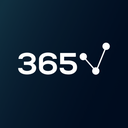Over the past week, news has spread about new major AI models challenging the established leaders we've known for the last 4 years.
Enter DeepSeek-R1, a powerful open-source model that's taking on OpenAI's market dominance.
As organizations and developers evaluate their AI options, comparisons between DeepSeek and OpenAI—specifically DeepSeek vs ChatGPT and DeepSeek vs o1—have become increasingly important.
In this article, we'll conduct a comprehensive comparison of DeepSeek-R1 and OpenAI's o1, focusing on their core differences and strengths. We'll examine their performance across three key areas:
- Mathematical reasoning capabilities and problem-solving abilities
- Coding proficiency and software development performance
- General reasoning and task-handling capabilities
We’ll help you understand which of these new AI models might be better suited for specific applications and use cases. We'll also explore the cost implications and safety factors that could influence your choice between these two powerful AI systems.
Want to join the teams leading these AI innovations? Enroll in our AI Engineer Career Track to build the skills needed for success in this rapidly evolving field.
Table of Contents
- What Is DeepSeek-R1?
- What Is OpenAI's o1?
- Performance Comparison: DeepSeek vs o1
- DeepSeek vs OpenAI: Cost Comparison
- DeepSeek-R1 vs o1: Which is Safer to Use?
- Choosing the Best AI for Different Tasks
- The AI Race: What Can We Expect?
- Stay Ahead of AI: 365 Data Science’s AI Engineer Career Track
What Is DeepSeek-R1?
DeepSeek—a Chinese AI company founded in 2023—has made waves in the AI community with its latest release: DeepSeek-R1. This model represents a significant advancement in open-source AI technology with a unique approach to model training and development.
Training method is the largest factor in the differences between DeepSeek vs OpenAI.
While OpenAI's o1 models use large-scale Supervised Fine-Tuning (SFT) combined with reinforcement learning, DeepSeek started R1-Zero using only reinforcement learning—a first for open-source models.
In simple terms, their model first learns from carefully selected examples, then learns to reason through trial and error, and finally refines its skills through extensive training—similar to how a student might learn through examples, practice, and feedback.
DeepSeek's reasoning process stands out through its sophisticated self-correcting behaviors and chain-of-thought approach. The model can pause mid-reasoning to reevaluate its logic—often signaled by phrases like "Wait a minute" or "Wait, but..."
This architectural approach drastically affects the price of using DeepSeek vs OpenAI. DeepSeek-R1 operates at roughly 5% of the cost compared to traditional models, as it only needs to process 37 billion parameters per calculation instead of all 671 billion. This significant cost reduction makes it an economically attractive option for large-scale AI deployments.
What Is OpenAI's o1?
In comparison, traditional models like OpenAI's are trained in a more straightforward way—they learn by studying examples with correct answers, like a student who only learns from textbooks and practice tests.
OpenAI's o1 represents the latest AI innovation in their model series, building upon the success of ChatGPT and GPT-4. The o1 family includes three variants: o1 (standard), o1-mini, and o1 pro mode, each designed for specific use cases.
OpenAI's o1 has surpassed previous models in technology and reasoning ability. It excels at complex problem-solving and logical analysis, breaking down multi-step problems while maintaining coherent reasoning chains. These improvements, combined with enhanced safety features and bias detection, make o1 especially valuable for business and professional applications.
While DeepSeek-R1 operates efficiently by using only 37 billion parameters per calculation, o1 requires significantly more computational resources, making it approximately 20 times more expensive to run at scale. This has been seen as one of DeepSeek's greatest advantages.
We can compare DeepSeek vs o1 in the charts below. Notice how both models have similar quality ratings (89% to 90%), yet DeepSeek's cost rating is significantly lower at just \$4 per 1M tokens compared to o1’s \$26.3 (source: Artificial Analysis).

But can DeepSeek's R1 fully replace o1—or even ChatGPT—for all our current AI needs?
Performance Comparison: DeepSeek vs o1
Sources: DeepSeek-R1 paper and OpenAI o1 System Card

Mathematical Reasoning
The first factor in our DeepSeek vs OpenAI comparison is mathematical reasoning.
MATH-500 is a rigorous benchmark testing advanced mathematical problem-solving abilities, covering topics from algebra to calculus. A high score indicates exceptional mathematical reasoning capabilities.
MATH-500 Score:
- DeepSeek-R1: 97.3%
- OpenAI o1: 96.4%
These scores demonstrate both models' exceptional capability in advanced mathematics. A score above 95% indicates near-human-expert level performance in solving intricate mathematical problems.
The narrow margin between DeepSeek-R1 (97.3%) vs o1 (96.4%) suggests that both models are highly competent in mathematical reasoning, with DeepSeek-R1 having a slight edge.
Coding Capabilities
Codeforces ratings measure programming contest performance, with ratings above 2000 indicating master-level problem-solving abilities in competitive programming.
Codeforces Score:
- DeepSeek-R1: 2029
- OpenAI o1: 2061
In software development benchmarks, DeepSeek-R1 demonstrates impressive capabilities, particularly in specialized tests like SWE Verified and LiveCodeBench. What's remarkable is that it achieves these results while operating at just 5% of the cost of traditional models.
OpenAI's o1, however, maintains its position as the leading coding assistant, outperforming in most major benchmarks—setting a high bar for these new AI models to strive toward.
General Reasoning
These benchmarks evaluate the AI's ability to handle complex reasoning tasks. The GPQA Diamond benchmark tests general problem-solving abilities, giving us a better idea of what is the best AI.
GPQA Diamond Score:
- DeepSeek-R1: 71.5%
- OpenAI o1: 75.7%
The close scores on GPQA Diamond suggest that both models demonstrate strong general reasoning capabilities, with o1 having a modest 4.2% advantage.
In other words, DeepSeek-R1 is competitive in real-world problem-solving scenarios. But it's worth noting that these results may shift as DeepSeek continues its training process.
AlpacaEval and ArenaHard are two additional benchmarks that measure response quality and reasoning abilities. According to DeepSeek's research paper:
AlpacaEval Results:
- DeepSeek-R1: 87.6%
- GPT-4 Turbo (for context): 55.0%
ArenaHard Results:
- DeepSeek-R1: 92.3%
- GPT-4 Turbo (for context): 82.63%
*Note: The leaderboards have not yet been updated to include o1 and R1; these scores for R1 were listed in DeepSeek’s research paper.
The significant gap between DeepSeek-R1 and GPT-4 Turbo on both AlpacaEval (+32.6%) and ArenaHard (+9.67%) suggests potentially impressive improvements in response quality and complex reasoning. These results, however, should be interpreted cautiously since they are self-reported and haven't been independently verified on official leaderboards. The absence of o1 scores on these benchmarks also makes direct comparisons between DeepSeek vs o1 difficult.
DeepSeek vs OpenAI: Cost Comparison
|
Model |
Price per 1M Tokens (Cached Input) |
Price per 1M Tokens (Input) |
Price per 1M Tokens (Output) |
|
DeepSeek-R1 |
\$0.14 |
\$0.55 |
\$2.19 |
|
OpenAI o1 |
\$7.50 |
\$15.00 |
\$60.00 |
As shown in the pricing table above, DeepSeek's model demonstrates a significant cost advantage, with prices approximately 20 times lower than OpenAI's o1 across all token types. This dramatic price difference makes DeepSeek an attractive option for large-scale AI implementations while maintaining comparable performance metrics.
DeepSeek-R1 vs o1: Which is Safer to Use?
When it comes to safety and trustworthiness, both models take different approaches with distinct strengths. Here’s a comparison of the security features of DeepSeek-R1 vs o1.
OpenAI o1's Features
- Comprehensive safety protocols including external red-teaming exercises and ethical evaluations
- Advanced jailbreak resistance
- Impressive content policy adherence with a 0.92 not-unsafe score on the Challenging Refusal Evaluation
- Enhanced bias mitigation, achieving 94% accuracy on demographic fairness tests
- Only 0.17% of responses flagged as potentially deceptive in extensive testing
- Formal agreements with U.S. and U.K. AI safety institutes
DeepSeek-R1's Approach
- Incorporates human preference alignment through a secondary RL stage focused on helpfulness and harmlessness
- Open-source nature promotes transparency and allows for community verification
- Self-verification capabilities developed through reinforcement learning
- Demonstrates sophisticated self-correcting behaviors within its chain of thought reasoning
Content Restrictions and Privacy
While OpenAI is an American company, these new AI models are based in China.
DeepSeek-R1 operates under strict content restrictions aligned with Chinese regulations. The model includes built-in guardrails that limit responses on certain political and social topics, sometimes aligning with specific political viewpoints rather than providing balanced perspectives.
Nevertheless, because R1 is open-source and freely available to download, users can host it on their own servers or through U.S. companies, giving them more control over their data and privacy.
Conclusions
While OpenAI o1 leads in formal safety measures and rigorous testing protocols, particularly in preventing jailbreaking attempts, DeepSeek offers transparency through its open-source models.
OpenAI's model appears more suitable for high-stakes applications requiring strict safety compliance, while DeepSeek-R1's flexibility in deployment allows for greater privacy control and customization.
Choosing the Best AI for Different Tasks
Now that we've seen how they perform, let's discuss when you should use each model.
When to Choose DeepSeek
- Cost-Sensitive Projects: Offers comparable performance at significantly lower cost
- Open-Source Development: Ideal for customization and research purposes
- Mathematical Applications: Slightly edges out o1 in mathematical reasoning tasks
When to Choose OpenAI
- Enterprise Applications: Better safety features and compliance measures
- Coding Projects: Superior performance in programming-related tasks
- General Purpose Use: More versatile across different applications
The AI Race: What Can We Expect?
The competition between DeepSeek vs OpenAI represents a broader trend in AI development: the convergence of open-source AI innovation and proprietary excellence. While DeepSeek-R1 challenges OpenAI's dominance with impressive performance metrics and cost efficiency, OpenAI maintains advantages in safety features and general capabilities.
For data scientists and AI practitioners, this competition drives AI innovation and accessibility. And the race continues—just days after DeepSeek's breakthrough, Alibaba's Qwen 2.5 emerged with even better reasoning capabilities and lower costs, though with some creative limitations. This rapid evolution suggests an unprecedented era of AI advancement ahead.
Stay Ahead of AI: 365 Data Science’s AI Engineer Career Track
In the DeepSeek vs OpenAI comparison, there's no clear universal winner. The choice between these AI models depends on specific use cases, budget constraints, and technical requirements.
But regardless of which AI model you choose, the key to staying ahead in this evolving field is to develop AI expertise yourself.
That's why we're excited to introduce 365 Data Science's new AI Engineer Career Track—a comprehensive program designed to help you master technologies like those we've discussed in this article and beyond.
Just as we've seen with the rapid evolution of new AI models like DeepSeek-R1 and OpenAI's o1, the demand for AI professionals continues to surge.
With AI Engineers commanding an average salary of over \$200,000 in the US, there's never been a better time to develop expertise in this field.
The AI Engineer Career Track offers a structured path through essential skills including:
- Foundation model integration and deployment
- Practical AI application development
- LLM engineering with tools like OpenAI and LangChain
- Vector database management with Pinecone
- Real-world solution building using Streamlit
Ready to master AI engineering? Start your journey with 365 Data Science's AI Engineer Career Track today.
What are your thoughts on this AI showdown: DeepSeek vs OpenAI? Share your perspective on our social channels!






